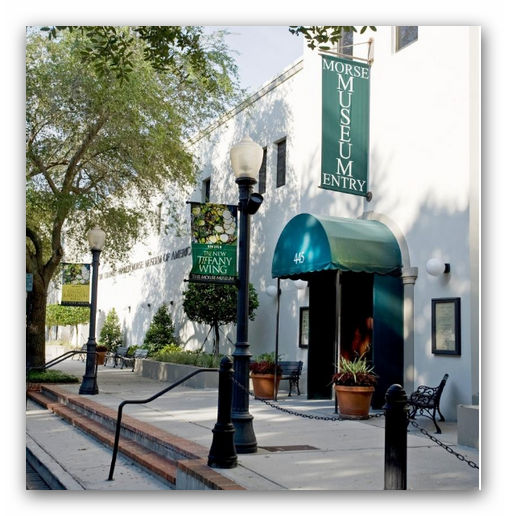Feb 9 2016 - Sep 25 2016
Winter Park, FL
In the late 19th century, expanding routes for steam-powered locomotives and transatlantic ocean liners beckoned Americans to new lands and places as never before. Amid the excitement of discovery, spoon collecting became an international fad. Silver makers transformed this humble utilitarian object—the earliest known piece of silverware—into a must-have memento for people who were traveling, had traveled, or would travel.
The Morse Museum’s collection of souvenir spoons was acquired by the Charles Hosmer Morse and Hugh F. McKean families in the heyday of their popularity. They assembled more than 550 souvenir spoons from 83 countries but predominantly the United States. All but five states are represented.
This exhibit organizes 250 of these spoons by various themes. For Americans, the quaint souvenirs revealed a burgeoning national identity. Elaborately ornamented and engraved, they memorialize small towns, large cities, educational institutions, world’s fairs, scenic wonders, monuments, famous men, flora and fauna, and the romance of the Wild West.
Souvenir spoons first appeared in Europe in the mid-nineteenth century and came to America with returning tourists. The first American souvenir spoon was produced by Galt Bros. & Co. of Washington, DC, in 1889 to mark the centennial of George Washington’s presidency. Next, in 1891, Boston jeweler Daniel Low produced a spoon inspired by witches—specifically the lore of Salem, Massachusetts. Both are on display in this exhibit, where you may also find a spoon celebrating your state, town, or a marvelous sight you have read about or visited. The Morse Museum hopes you will also gain a sense of how extensive and interesting the world of collectible spoons came to be at a time when the gates to tourism were opening wide.
Credit: Exhibition overview from museum website
Exhibition Venues & Dates
Feb 9 2016 - Sep 25 2016
Winter Park, FL
